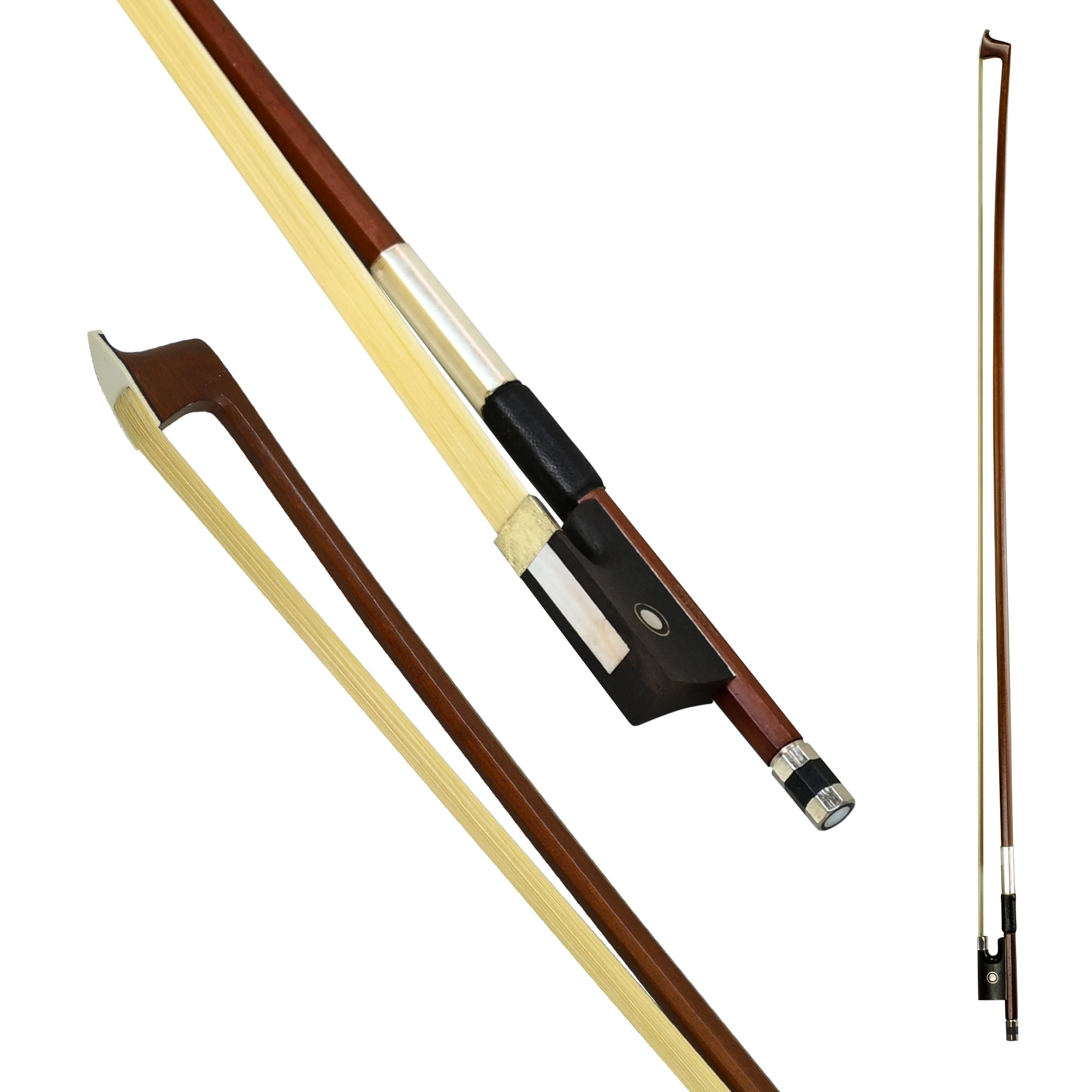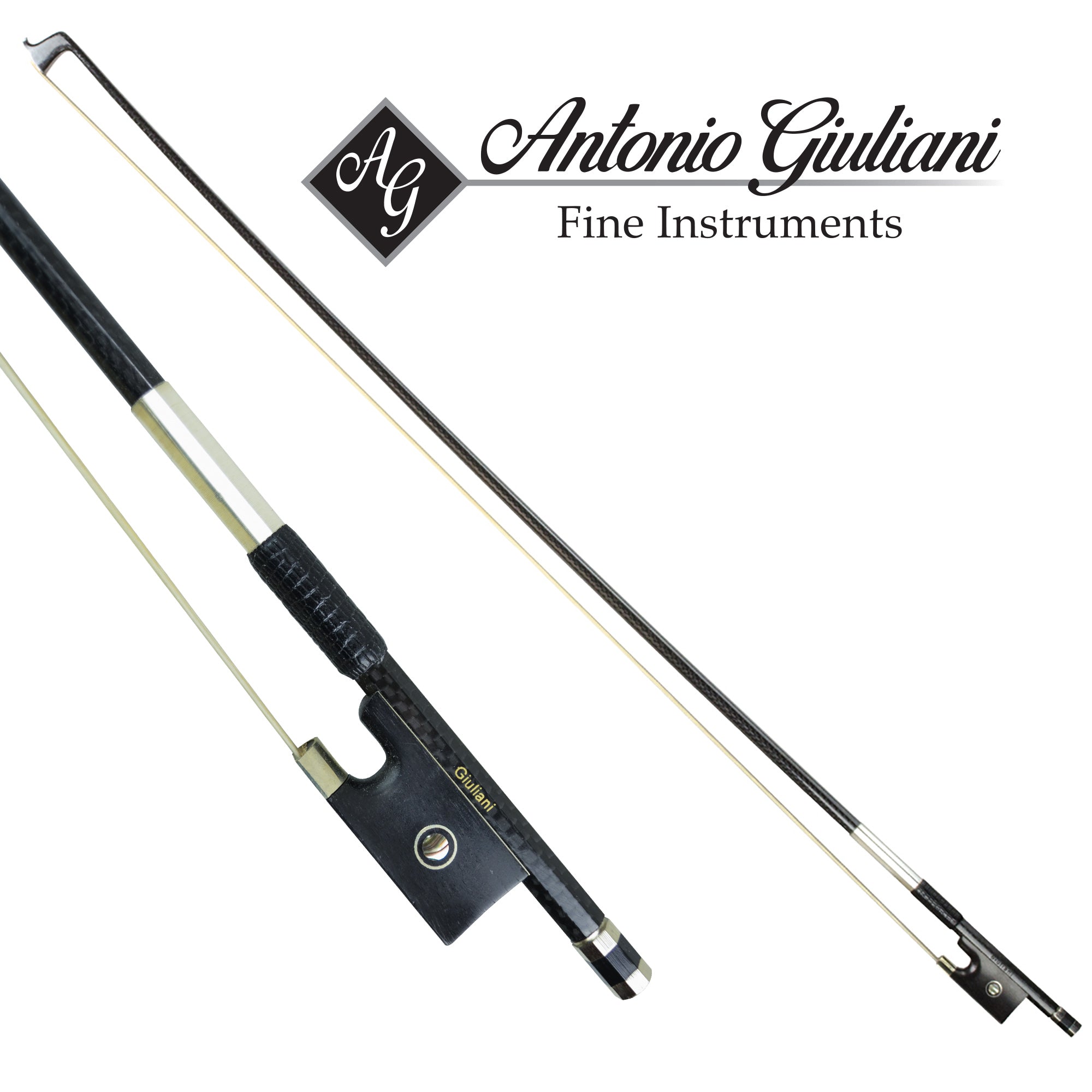How To Buy a Violin Bow — Important Factors To Consider
The violin is an instrument of delicate beauty and intricate craftsmanship, where each component plays a pivotal role in producing its iconic sound. Among these components, the violin bow holds a special place.
Often overshadowed by the violin itself, the quality of a violin bow is crucial in shaping the player's sound and technique. This article delves into the importance of violin bow quality, exploring how different materials and craftsmanship levels impact performance, sound, and player development.
Understanding Violin Bow Materials
Brazilwood Bows: The Beginner's Choice

Brazilwood bows represent the entry-level option in the violin bow market. Known for their affordability, these bows are typically recommended for beginners. The term "Brazilwood" encompasses a variety of hardwoods from Brazil that are used in bow making.
These bows are characterized by their sufficient flexibility and strength, offering new students an accessible introduction to the violin. However, as Brazilwood is less dense than higher-quality woods, these bows may lack the responsiveness and sound quality desired by more advanced players.
Carbon Fiber Bows: Durability Meets Performance

As players progress, they often seek upgrades in bow quality. Carbon fiber bows, made from a man-made material, offer a significant step up. These bows are known for their consistency, durability, and resistance to warping—a common issue with wooden bows.
Carbon fiber provides a great balance between flexibility and strength, allowing for more nuanced control and a better sound production compared to Brazilwood bows. Their robustness makes them an excellent choice for students and professionals alike, especially as backup bows or for those who perform in varying climatic conditions.
Pernambuco Bows: The Professional's Preference

At the pinnacle of violin bow materials lies Pernambuco, a dense, Brazilian wood highly coveted for its superior acoustic properties.
Pernambuco bows are the gold standard among professional violinists, prized for their exceptional responsiveness, balance, and ability to produce a rich, nuanced tone. The rarity and high demand for Pernambuco have made these bows more expensive, but for serious players, the investment significantly enhances performance and sound quality.
Craftsmanship and Quality
The craftsmanship of a violin bow significantly affects its quality and performance. From the shaping of the stick to the selection and attachment of the horsehair, meticulous craftsmanship ensures a bow that not only plays well but also stands the test of time.
Mountings and Adjustments
The mounting of a bow, which includes the frog and screw mechanism, plays a critical role in its functionality and durability. Bows can be half-mounted or fully mounted, with higher-quality bows often featuring full mountings made of durable materials like ebony and metals such as nickel or gold. These materials not only contribute to the aesthetic appeal of the bow but also to its overall balance and the smoothness of the adjustment mechanism.
Horsehair Quality
The quality of the horsehair used on a bow is another critical factor. High-quality bows use premium Mongolian horsehair, known for its strength, elasticity, and ability to hold rosin well. This ensures a better grip on the violin strings, leading to a richer sound production and more dynamic control over musical expression.
The Impact of Bow Quality on Performance and Sound
Responsiveness and Control
A high-quality violin bow significantly improves the player's responsiveness and control. A well-crafted bow allows for a wider range of dynamics, smoother transitions between notes, and more precise articulation. This level of control is essential for advanced techniques and musical expression, enabling players to convey the emotional depth of their music with greater ease.
Sound Quality
The material and craftsmanship of a violin bow directly influence the sound quality of the instrument. A superior bow can draw out a richer, more resonant tone from the violin, enhancing its natural qualities.
The difference in sound between a basic Brazilwood bow and a high-quality Pernambuco bow can be profound, with the latter offering a depth and clarity that elevates the musical experience for both the player and the audience.
Watch the video above to see a direct comparison between these two bows.
Player Development
Investing in a high-quality bow is not only about improving sound or performance but also about supporting the player's development. A good bow can make the learning process more enjoyable and rewarding, encouraging students to practice and explore new techniques. For advanced players, a premium bow can be a transformative tool, unlocking new levels of musical expression and mastery.
When selecting a violin bow, musicians must consider several key factors beyond the basic material choices of Brazilwood, carbon fiber, or Pernambuco. Understanding these aspects can help players make informed decisions that match their skill level, playing style, and budget. Here are critical factors to keep in mind:
Weight and Balance
The weight and balance of a bow significantly affect playability and comfort. A well-balanced bow feels comfortable in the hand and makes it easier to produce a consistent tone.
Most bows weigh between 58 and 62 grams, with the ideal weight varying depending on the player's preference and playing style. Finding the right balance point, usually located around the middle of the bow, is crucial for facilitating control and agility.
Flexibility
Flexibility is another essential characteristic of a violin bow. A bow's flexibility influences its responsiveness and the ease with which a player can execute various bowing techniques.
While too much flexibility can make a bow feel flimsy and hard to control, insufficient flexibility may result in a harsh, forced sound. The perfect bow flexes enough to allow for expressive playing but retains sufficient stiffness to offer stability and control.
Player's Skill Level and Goals

Your current skill level and future aspirations should guide your bow selection. Beginners might prioritize durability and ease of use, making Brazilwood or carbon fiber bows suitable choices.
Intermediate players seeking to refine their sound and technique might look for bows that offer a balance of quality and affordability. Advanced players and professionals, on the other hand, often seek high-end Pernambuco bows that provide the nuanced control and sound quality necessary for professional performance and recordings.
Budget
Budget is always a consideration, with violin bows ranging from under a hundred to several thousand dollars. While it's advisable to invest in the best bow within your budget, it's also important to consider the long-term value and how the bow will serve your evolving needs. Sometimes, investing in a slightly more expensive bow that offers room for growth is more beneficial than choosing a cheaper option that you'll soon outgrow.
Trial Period and Return Policy
Given the subjective nature of choosing a bow, having the opportunity to try before you buy is invaluable. Many violin shops and online retailers offer trial periods, allowing you to test bows with your instrument in your own playing environment. Additionally, understanding the return policy can provide peace of mind, ensuring you can make a different choice if the bow doesn't meet your expectations.
Conclusion
The quality of a violin bow plays an indispensable role in the journey of a violinist. From the beginner exploring the basics to the professional seeking to captivate an audience, the choice of bow can profoundly affect one's musical expression, sound quality, and overall playing experience.
While the initial investment in a high-quality bow may seem substantial, the benefits it brings to performance, sound, and personal development are invaluable. Whether it's the robust durability of carbon fiber or the unmatched tonal beauty of Pernambuco, the right bow is a crucial companion on the path to musical excellence.
















